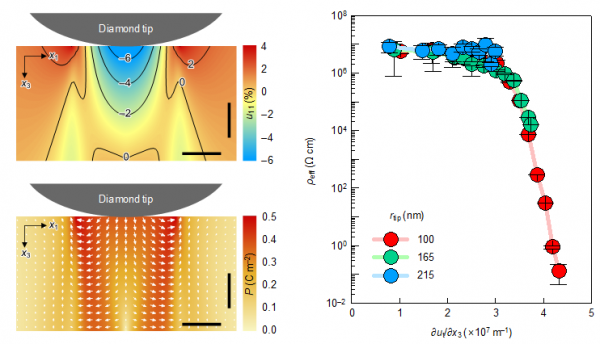[professor Lee, Daesu] Colossal flexoresistance in dielectrics
- No attach File
관련링크
main text

Caption: (Left) Generation of flexoelectric polarization in ultrathin SrTiO3. (Right) Colossal flexoresistance effect, realized via flexoelectricity in ultrathin SrTiO3.
Dielectrics have long been considered as unsuitable for pure electrical switches; under weak electric fields, they show extremely low conductivity, whereas under strong fields, they suffer from irreversible damage. Here, we show that flexoelectricity enables damage-free exposure of dielectrics to strong electric fields, leading to reversible switching between electrical states—insulating and conducting. Applying strain gradients with an atomic force microscope tip polarizes an ultrathin film of an archetypal dielectric SrTiO3 via flexoelectricity, which in turn generates non-destructive, strong electrostatic fields. When the applied strain gradient exceeds a certain value, SrTiO3 suddenly becomes highly conductive, yielding at least around 108-fold decrease in room-temperature resistivity. We explain this phenomenon, which we call the colossal flexoresistance, based on the abrupt increase in the tunneling conductance of ultrathin SrTiO3 under strain gradients. Our work extends the scope of electrical control in solids and inspires further exploration of dielectric responses to strong electromechanical fields.


-2.gif)









 Login
Login


